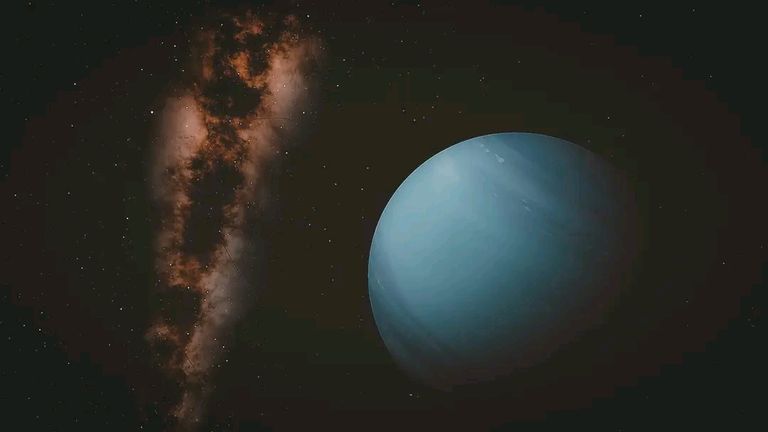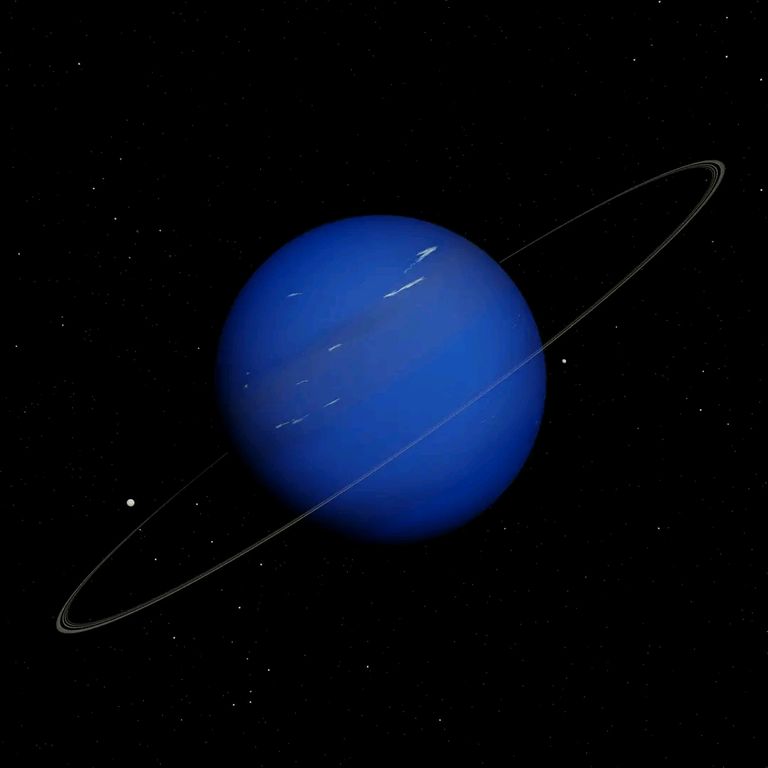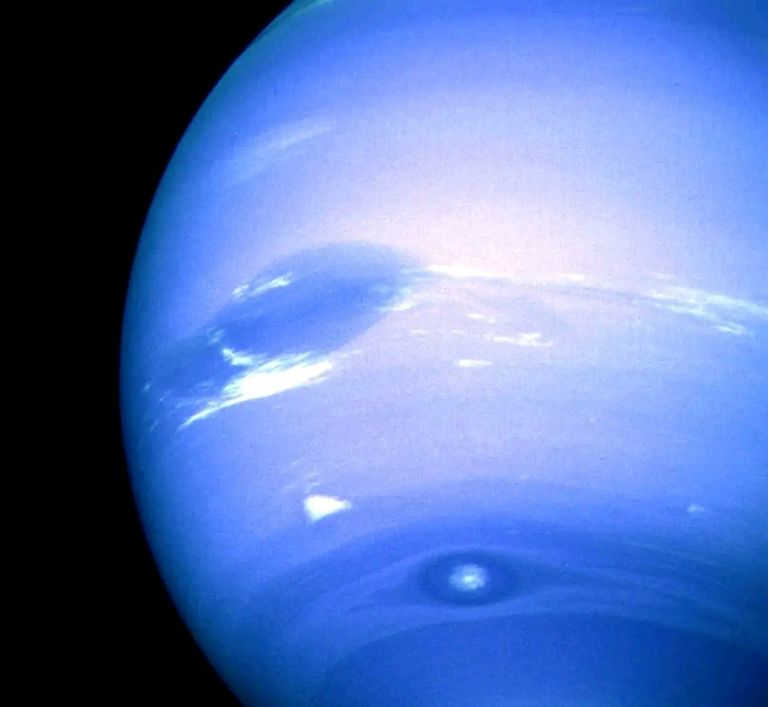All of us have more or less interest to know about planets satellites in space. With the blessings of science we now have the opportunity to know about them and have also come to know about the revelation of many of their mysteries. We have come to know the future and past of these planets only because of science. One such planet is Neptune. In today's program of Daily Bangladesh, we will learn about Neptune, a planet of our solar system.
Neptune is one of the planets farthest from the Sun. Its distance from the Sun is about 4.5 billion kilometers or 30.1 astronomical units. The fourth largest planet in the solar system is essentially a giant gas giant. Due to the huge distance between Earth and Neptune, this planet is still shrouded in mystery to scientists. However, among the exact facts that scientists have found so far, there are also some interesting facts. But then we don't know some interesting facts about this planet.

Many spacecraft were sent from Earth on various missions to learn unknown information about Neptune. They have made multiple visits to various planets in our solar system, but have only come close to Neptune once. That too in 1989. Voyager 2 was the first spacecraft to approach Neptune.
On August 25, 1989, the spacecraft flew as close as 3,000 km to the planet's north pole, taking several images and confirming that Neptune, like Uranus, has a magnetic field around it. Also discovered that like Saturn, Neptune has a subtle ring around it. Voyager 2 also observed a vortex above Neptune. These storms cause a spot on Neptune when viewed through a telescope from Earth. It is called the Great Dark Spot.
Interestingly, when the Voyager 2 spacecraft was sending all the data and images to Earth near Neptune, it took two hundred and forty-five minutes for all this data to reach Earth. According to Earth calculations, the earth takes 365 days to go around the sun once. On the other hand, Neptune takes 165 years to orbit the Sun. The planet travels 5.43 kilometers per second while traveling on its axis. The length of its orbit is 2,798,65 minute miles. However, the orbit being eccentric sometimes drops to 2771 million miles. Sometimes it increases to 2821 million miles.

Being the farthest planet from the Sun, the temperature of this planet is much lower than all the other planets. However, before that Pluto was the last known planet and its temperature was considered to be the lowest among the planets. But due to its recent exclusion from the list of planets, Neptune is the coldest planet in the solar system. But so far it has not been possible to enter Neptune and record its exact temperature. Based on Neptune's surface area, astrophysicists estimate the average temperature of Neptune to be minus 201 degrees Celsius. And the distance of this planet from the sun is another reason for its cooling.
This planet was discovered in 1845, about 50 years after the discovery of Uranus. The planet was discovered with the help of the French mathematician Urbon Le Berrio and the German astronomer Johann Godfied Gann. It is true that Galileo had already mentioned a star in his diagram of the solar system. Although at that time he could not specify which planet or star it was. This was because Neptune's weak motion caused many scientists at the time and later to mistake Neptune for a blue star. But Galileo is credited as the discoverer of Neptune.
Meanwhile, scientists have discovered Neptune's thermosphere in the space between its atmosphere's exosphere and stratosphere. The temperature of this thermosphere is about 477 degrees Celsius. Even though this planet is so far away from the sun, how can its temperature be so high, scientists are now continuing to experiment. Scientists estimate that the temperature of the center of this planet can be up to five thousand degrees Celsius. Although Neptune is not as large or obvious as Saturn, Neptune has rings. Neptune's rings are made up of five rows of rings. These are named Arago, Galley, LaSalle, LeBriour and Adams respectively.

The rings are named after the main scientists who studied Neptune who helped discover them. Analysis of data from Voyager 2 showed that Neptune's rings, made up of rock fragments and minerals, are smaller than Uranus' rings. They are thought to have formed as a result of a collision between Neptune and one of its moons.
Neptune is originally the name of the Roman god of the sea. And with this name this planet is named because this planet is blue in color. The Romans were the first to start naming planets. They named the planets and stars visible to their eyes after their gods. Even after the invention of the telescope, the Roman tradition of naming satellites after their gods continued. When Neptune was discovered it looked like Earth's blue ocean to astrologers. Which is why it was named after the Roman god of the sea, Neptune.
Neptune is originally the name of the Roman god of the sea. And with this name this planet is named because this planet is blue in color. The Romans were the first to start naming planets. They named the planets and stars visible to their eyes after their gods. Even after the invention of the telescope, the Roman tradition of naming satellites after their gods continued. When Neptune was discovered it looked like Earth's blue ocean to astrologers. Which is why it was named after the Roman god of the sea, Neptune.
Neptune is the fourth largest planet in the solar system and the third heaviest planet. Its mass exceeds that of Uranus. Neptune's mass is 17 times that of our Earth and only 5 percent of Jupiter's mass. The upper atmosphere of Neptune is mostly composed of hydrogen and helium. The presence of methane on this planet has also been observed, scientists said. And this is why this planet looks blue in color. However, even though Uranus has the same amount of methane in its atmosphere, only Neptune appears blue. For this reason, it is believed that there is another reason behind the blue color of this planet.
Because Neptune is made of gas, no spacecraft can land on this planet. Neptune's climate is very harsh. Most of the time huge storms can be seen here. The largest storm seen in 1989 was The Great Dark Spot, which lasted for about five years. And the area of this spot was so big that it would be equal to the size of our earth. A small dark spot appears after just a few years. And the size of this storm will be equal to the size of our moon. And all these storms rush through Neptune's chest at speeds of 1300 miles per hour.
14 moons of Neptune are known so far. The name of the largest satellite is Tritan. And it is colder than Neptune with a temperature of minus 140 degrees Celsius. And this satellite is the largest and only spherical satellite of Neptune. Hope you have learned a lot about the planet Neptune.